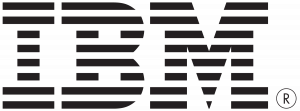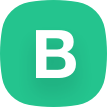What is an IoT platform?
Internet of things (IoT) software collects, manages, and processes the data coming in from connected devices. It uses partner systems, embedded systems, and middleware to control real-time analytics, data collection, and device integration within the IoT network. The software integrates with critical business systems (such as robotics, scheduling, and ordering systems) as it accomplishes various tasks.
Software designed for the internet of things controls and manages sensors, measuring devices, small amounts of data filtering, and light data security. It will connect the sensors of machine-to-machine networks, in real-time, and collect data from different devices, and then distribute it, as directed by its settings. It can also be used in reverse by sending data to devices (or “over-the-air updates”).
Devices are integrated by IoT software, binding all system devices to form the network body. The software ensures the cooperation and stable communications between devices. These applications define how the IoT network functions. The software manages the various protocols and limitations for each device, and allows them to communicate.
Find your new IoT software
Best IoT software
The internet of things includes any device that has an on/off switch and is connected to the Internet. This includes a variety of devices, ranging from a heart monitor implant sending medical reports, to a sensor detecting a problem with a piece of manufacturing equipment, to a mobile phone communicating its location. The IoT is made up of a massive network of devices connected through the internet.
The internet of things is not a technology, but a concept focused on connecting electrical devices with the internet. It can be used in manufacturing plants and is ideal for
smart cities. This new way of using technology offers significant opportunities that range from monitoring customer shopping patterns to predicting problems with equipment.
Research suggests the following companies are popular and provide excellent service.
Particle IoT: Best IoT platform for enterprises
Particle is described as an “enterprise” IoT platform, which offers everything needed to develop an effective IoT network, from device to cloud. Particle gives developers the IoT tools necessary for building internet of thing’s solutions, quickly. Their IoT platform supports complete visibility of all the devices being used, and allows the IoT devices to be controlled from a single central interface. It can be used in reverse to send over-the-air software updates to the right devices. Particle’s remote diagnostics application can be used to reduce troubleshooting time. Particle gets good reviews and is considered by many to be one of the best IoT platforms.
Particle features
- A reliable infrastructure
- User-friendly
- Cloud is firewall-protected
- Integrates easily with devices/software
Google Cloud IoT Core: Best IoT for tool variety
The IoT core platform is a part of the Google Cloud collection of services. It is a very popular service because it offers a large range of IoT tools and is user-friendly.
Google’s IoT Core connects easily and securely to manage data from devices at any location. When combined with other Google Cloud services, it will collect, process, and analyze data.
Google’s IoT Core features
- Uses machine learning
- Real-time business insights
- Strong artificial intelligence capabilities
- Huge support for location intelligence
- Speeds up business processes
- Can increase the device work rate
- Utilizes cloud services
Thingworx IoT: Best industrial IoT
The
ThingWorx platform is designed to work with the “industrial internet of things” (also referred to as the IIoT) and provides an end-to-end technology platform. It offers IoT tools that allow businesses to develop and deploy powerful applications quickly, and supports augmented reality experiences. Its applications can be deployed in the cloud, or on premise, and are scalable. It can be used with any network topology.
Thingworx IoT features
- Remote access and control
- Software content management
- Application interface for interaction with resource providers
- Cloud services deployment
IBM Watson IoT Platform: Best user-friendly system
The
IBM Watson IoT Platform is a cloud-hosted service designed to be user-friendly. It provides rapid visualization, connectivity, control, and storage of IoT data. The platform is smart, secure, and scalable. It delivers real-time analysis of IoT generated data, and users can sync both industrial and home equipment. Some users have mentioned that the price of IBM Watson IoT is prohibitive, however.
The IBM Watson IoT Platform features
- Integrates data from any source
- Uses dashboards to provide an overview of devices and their use
- Analyzes IoT data quickly and efficiently
- Recognizes usage and performance patterns, and detects anomalies
Blynk IoT: Best IoT tools
Blynk is described as the most popular internet of things platform for connecting devices with the cloud. Apps remotely control and monitor the devices, and manage thousands of deployed products. It is a Platform-as-a-Service, and helps individuals and organizations progress seamlessly from a rough prototype to it’s commercial launch. Customers are able to connect any device with the internet and access the software needed to launch commercial projects.
Blynk IoT platform features
- Offers a dashboard to monitor devices and control who has access
- Sends over-the-air updates
- An app manages WI-FI
- A variety of automated services
- Voice assistants
Understanding IoT features
Having a good understanding of the useful features supported by various IoT software platforms helps in selecting the best IoT solutions. Not all IoT products share all the same features. The internet of things is a service that connects a variety of devices within an established network. The IoT is used more and more across various industries, and is becoming a necessity for several companies wanting to remain competitive. Some of the more useful, commonplace features are described below.
Real-time analytics
These applications interpret data from various devices, and then convert it into viable actions or visual patterns for humans to analyze. The information is shown based on various settings used to perform automated tasks.
Application and process extension
These applications enhance the reach of existing IoT systems creating a wider, more efficient system. They can integrate predefined devices with specific purposes. It supports accurate data collection and improved productivity.
Over-the-air updates
An over-the-air update provides wireless delivery of software updates, new software, or other data to IoT devices. This feature ensures that devices are using the most up to date software without technicians needing to physically install the updates at the device.
WiFi-Direct
WiFi-Direct removes the need for a hardwired access point. It supports peer-to-peer (P2P) connections with WiFi, but comes with
lower latency. WiFi-Direct will eliminate a device in the network that slows it down, rather than compromising on speed or throughput.
Edge-to-cloud
This integrates all the infrastructure components needed to power an IoT network into a single service. IoT infrastructure components typically include the software, hardware, device management tools, connectivity, security, and the integrations needed to build and connect an IoT network. The benefit of this feature is that it deals with all the infrastructure.
Dashboards
The IoT dashboard is considered the primary human-machine interface component. It organizes and presents data from devices in a physical network, translating it into an easily understood display on the screen of a computer or a mobile device.
Sensors
These devices help humans to understand and analyze information about equipment, and the environment, and to make decisions based on that information. There is a significant variety of sensors (gyroscope, electrochemical, pressure, GPS, light sensors, pressure, etcetera. They are designed to gather data often with a focus on preventing a particular problem.
Artificial intelligence/machine learning
There may be vendors offering artificial intelligence or machine learning as a part of their services. These platforms support the use and creation of intelligent devices capable of learning from the data and their experiences. Intelligent devices will improve the device’s decision making process.
Selecting IoT software
Unfortunately, there is no simple process for choosing the best IoT platform for a business. The selection process depends strongly on the business model, the available resources, and the devices already being used, as well as devices in the planning stage. The following question topics should be helpful in finding the best IoT platform for a business.
1. Are the vendor’s reviews generally positive?
Because the IoT is still a fairly new concept, most vendors haven’t been around very long. Reviews are an easy and efficient way to learn about organizations and their products or services. Many websites and companies, sadly, promote their products or services by writing their own reviews. Never trust the reviews of an organization published on that organization’s own website. The better business bureau is a trustworthy review site, but typically offers only negative reviews.
2. Will all the devices of the IoT network work with the software?
There will probably be an investment in IoT hardware, making it important to be sure IoT software is compatible with all the system’s devices. Some IoT software platforms claim they can be used with any hardware. This sounds great, and may be “generally” true. Unfortunately, it’s the exceptions that damage a business by wasting time and money. List the IoT hardware and software, and get assurances the IoT platform is compatible.
3. Does the IoT platform cover the geographical areas your business needs?
Can the technology be expanded as your coverage area grows?
4. Does the vendor offer IoT tools for managing and monitoring the IoT system’s devices wirelessly?
Most platforms support some sort of device management, dashboards being the most popular. Make an effort to try them out. The experience will produce insights that can’t be gained another way. An IoT platform should connect devices with the internet, diagnose devices having problems, and communicate which devices are in use.
5. How much freedom does the IoT software platform offer?
Can the data be stored and processed in a useful format – or is the format restricted to the vendor’s platform? What analytical tools does the vendor provide? Can they be tried out in advance, for free?
6. How is security ensured?
Is security part of the vendor’s responsibility? How good is their security?
7. How does the vendor provide support and service?
Do they have experts on staff waiting to assist when someone calls with a problem? Do they offer a support community, with volunteers answering new questions when they have the time and interest, and with the answers being stored for easy access?
Is IoT worth it?
The internet of things is continuously growing. More and more, the IoT is becoming an essential part of an organization’s business strategy. The IoT is one of the many reasons companies are undertaking digital transformation. These businesses cover the full range of industries, from manufacturing to retail. IoT platforms allow businesses to connect the IoT and wearable devices without having to recruit third-party developers.
The internet of things supports communications with these devices. It improves efficiency and can provide new valuable services, while also creating a new market. Selecting the best IoT platform will make a business more efficient, minimize wasted time and money, and support new services.
 Particle IoT
Particle IoT Google Cloud IoT Core
Google Cloud IoT Core Thingworx IoT
Thingworx IoT IBM Watson IoT Platform
IBM Watson IoT Platform Blynk
Blynk

